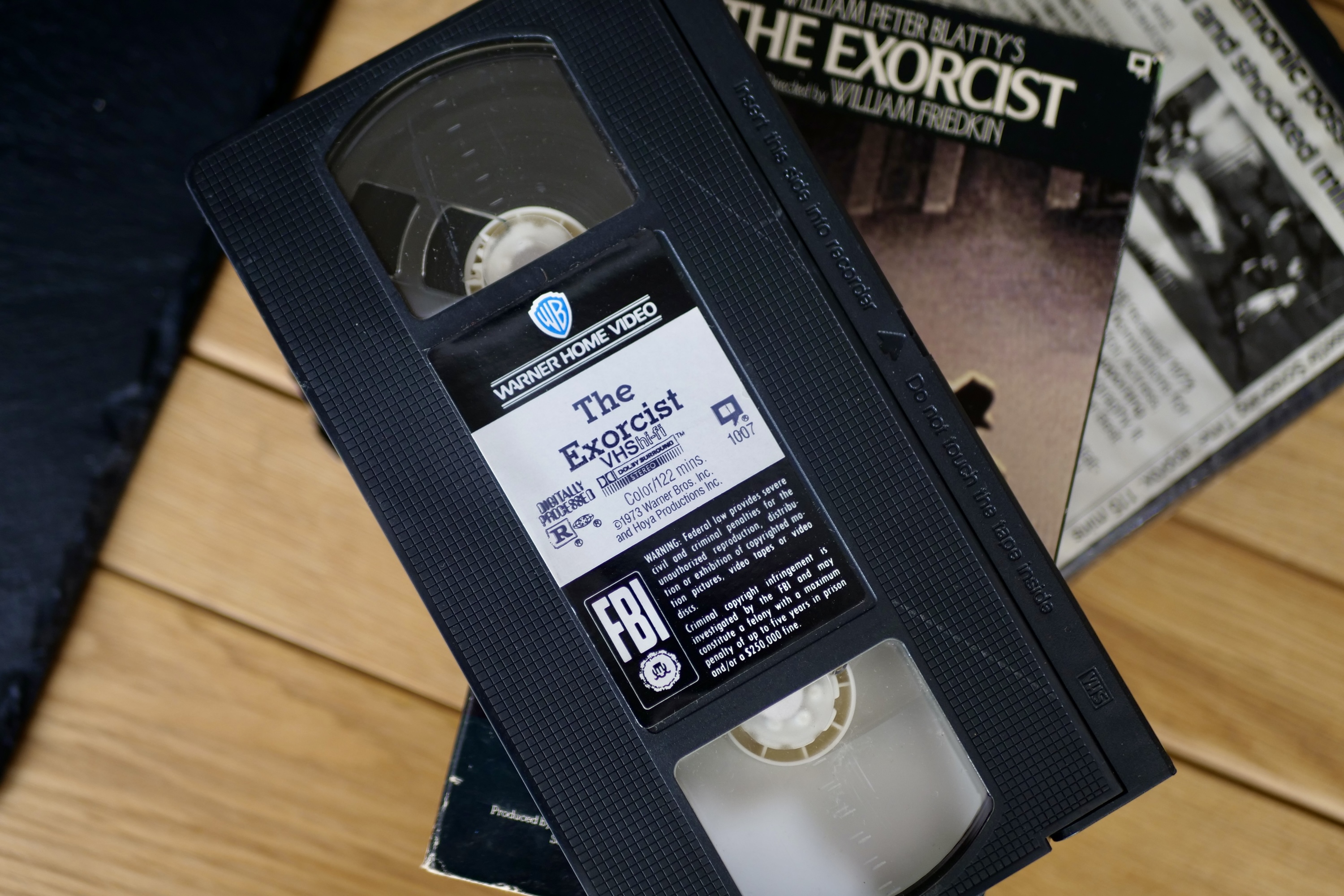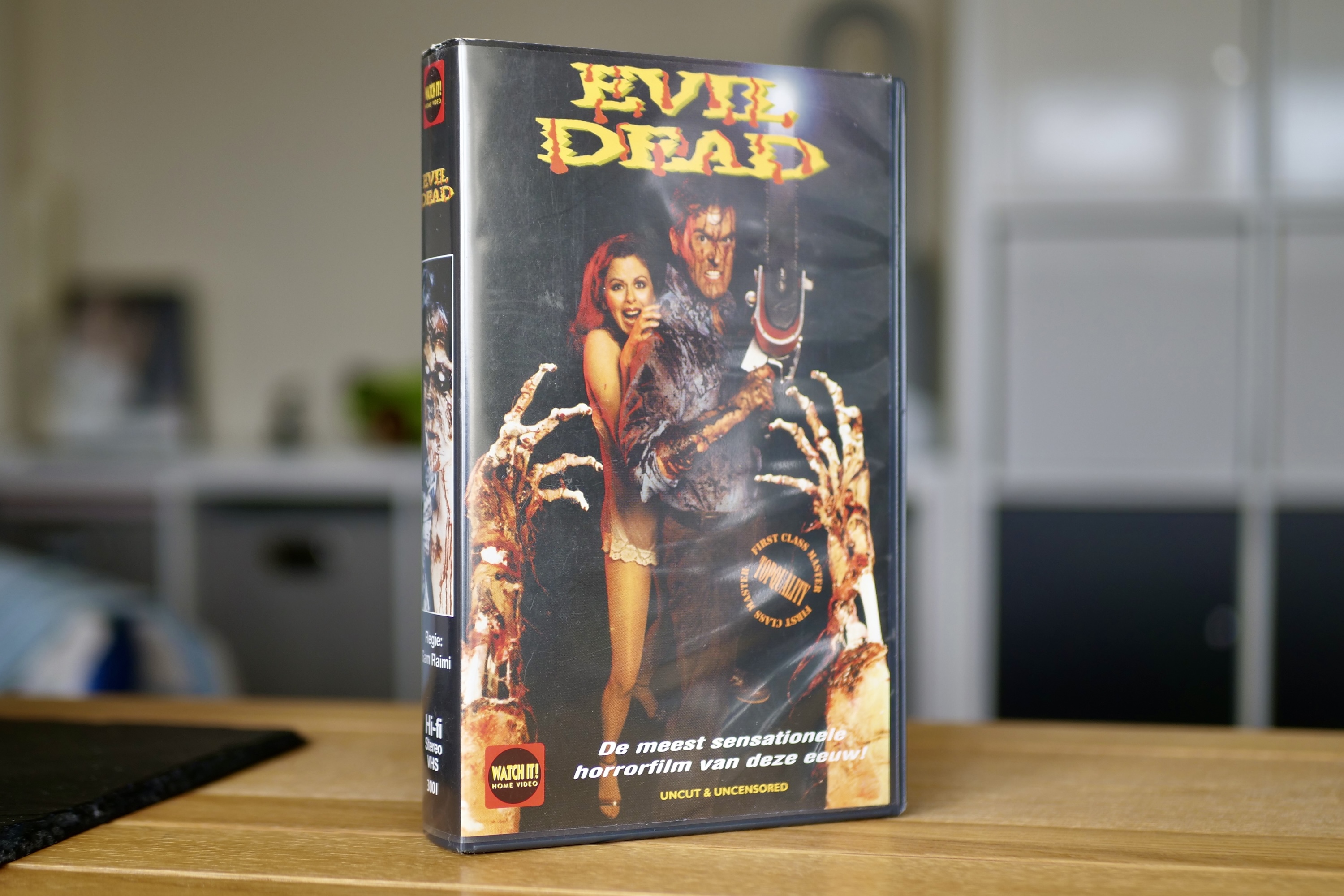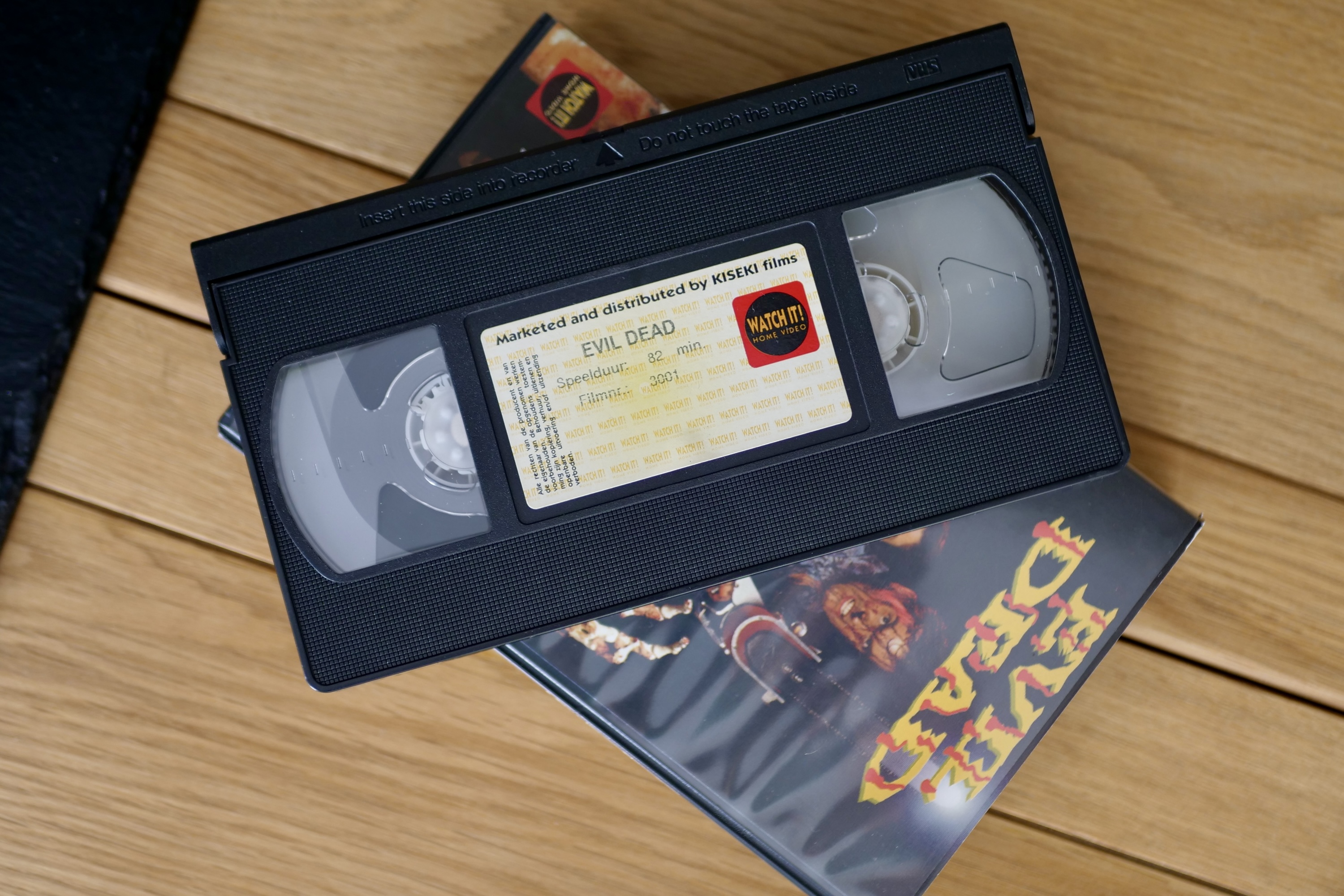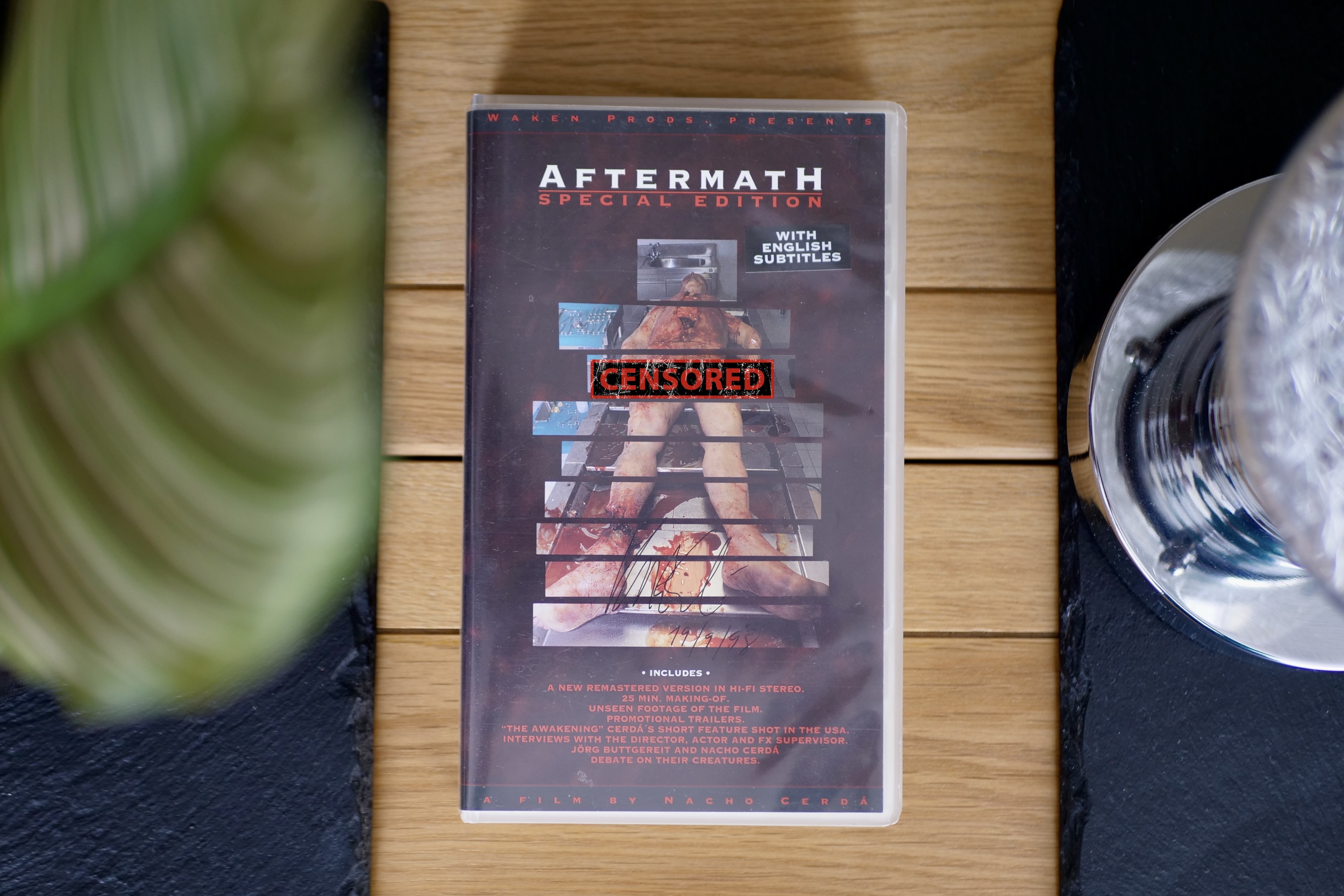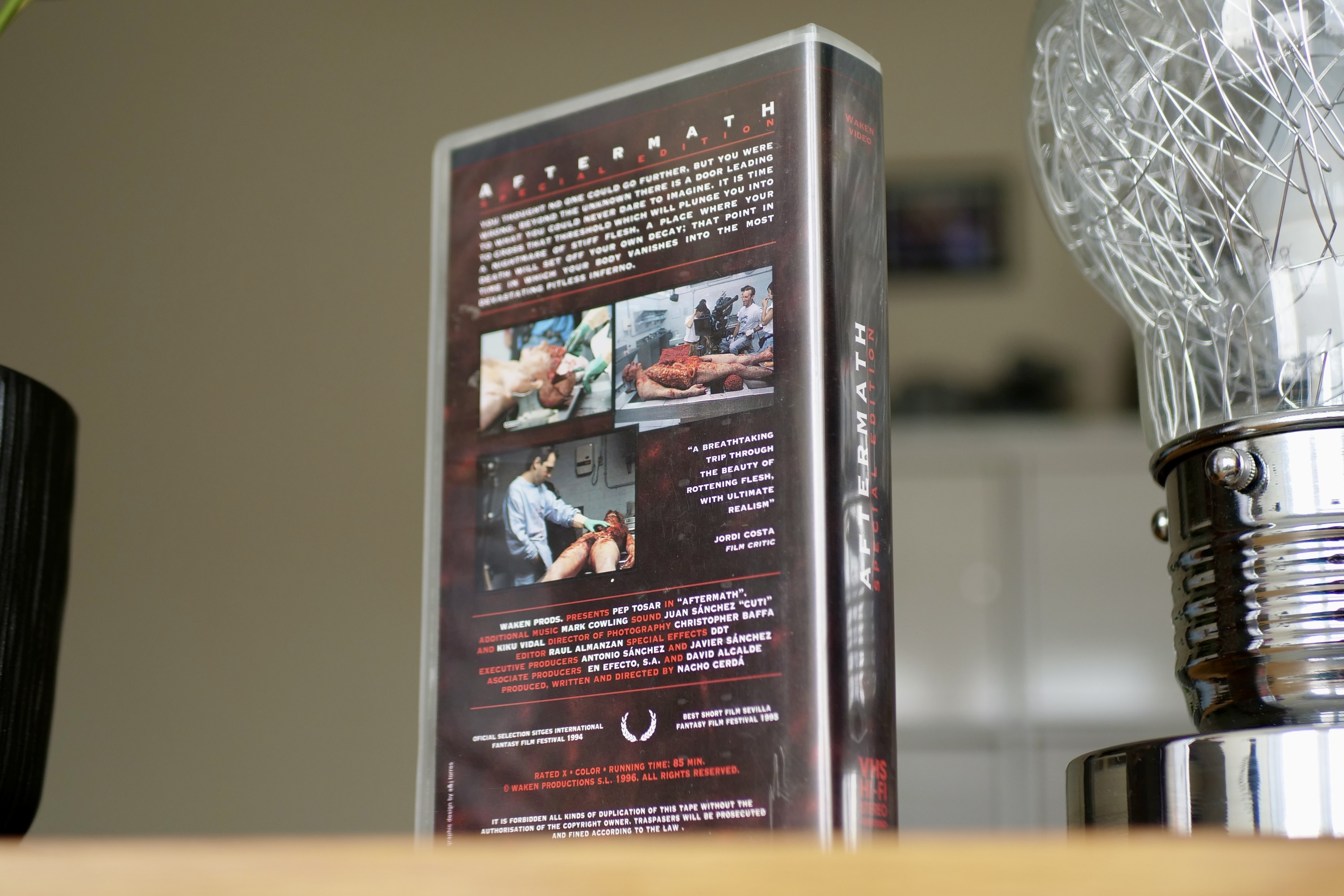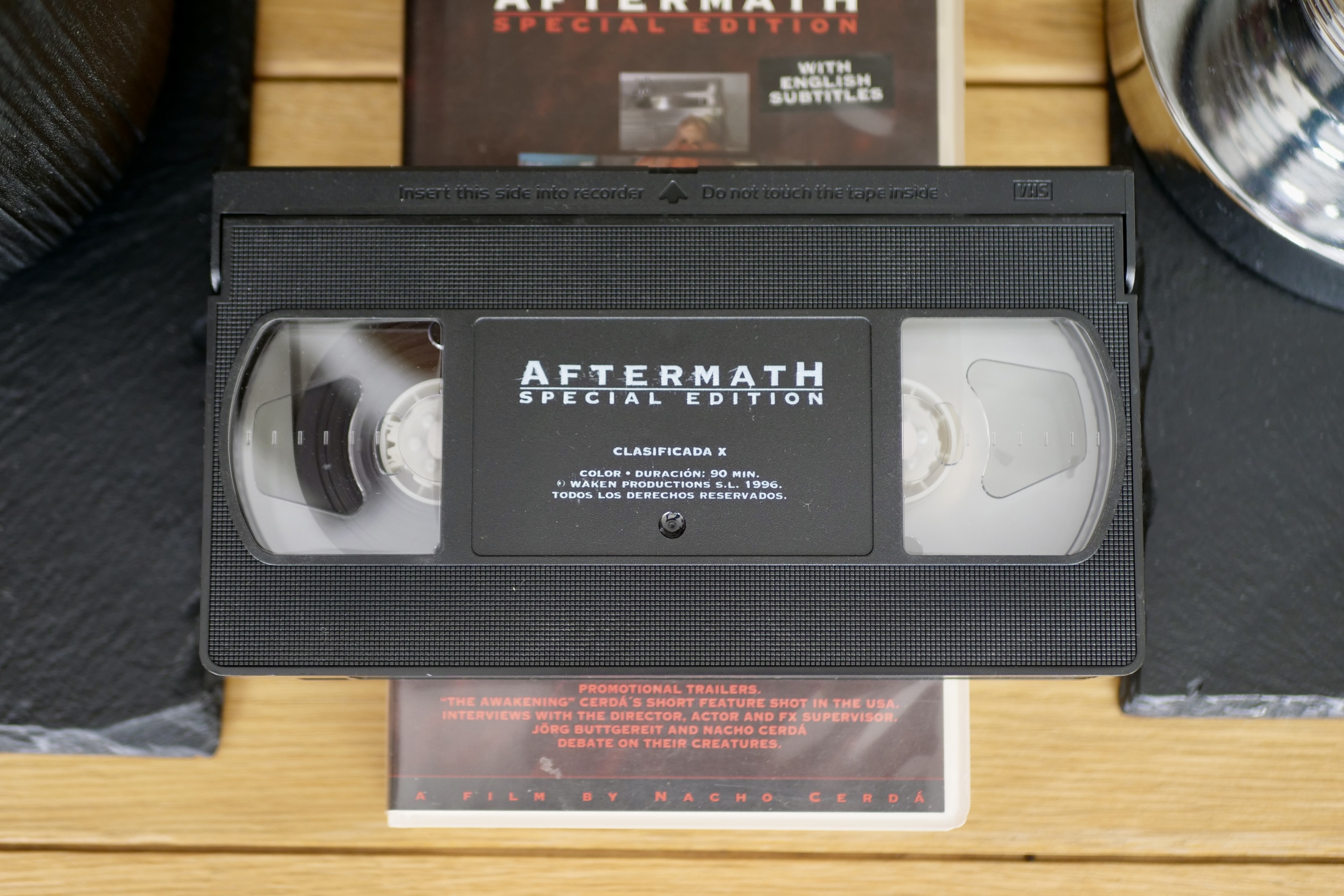
It was the perfect Halloween setting. I was going through some boxes in my parent’s dark, spider web-filled attic, and came across one lurking in the dark that looked particularly intriguing. After moving items aside to get closer, I saw the top of the box was opened slightly, urging me to peer inside. Upon lifting the edge up, dusty VHS cassette boxes came into view, each with intriguing titles on the spines. I had stumbled across my old, long-forgotten horror movie collection on VHS — and what awful treasures there were to discover within.
If you’re wondering what to watch this Halloween, perhaps some of the movies I found in the box will provide inspiration. I collected horror movies in the U.K. from the early 1990s and into the 2000s, and the harder they were to obtain, the better, with the most reprehensible and gory examples being the most coveted.

If this is beginning to sound like a confession, then you’re right. There are three significant, true horror classics listed below, alongside a pair of very obscure, really hardcore titles that I can’t quite believe I purchased upon finding them.
Editor’s note: the following may include graphic descriptions of mayhem and murder that aren’t for the faint of heart.
Understanding the horror landscape

Before we get to the list, context is very important to understand why this collection of movies would be a horror fan’s dream Halloween night viewing back in the ’90s. VHS was still the primary home viewing format, the internet was only being vaguely talked about, and fans connected through magazines, fanzines, and cinemas known for edgier performances, like the Scala in London, or annual horror-centric film festivals.
In the U.K., censorship was rampant, and the list of films and TV shows (not just horror or violent ones) being cut, refused a certificate, or outright banned was long and continuously updated. It had reached such a fever pitch that entire magazines were being published to talk about the issue. In my attic search, I found a copy of one called Scapegoat, which looked at censorship the world over, and it captured the zeitgeist perfectly.

To further help understand what it was like, the magazine featured articles on how Mortal Kombat and Doom’s violence helped usher in video game certification, and how the newfangled internet was making it effortless to view adult material that was outlawed. Though likely viewed as subversive at the time, Scapegoat recognized change was coming, but at the time the average horror fan had to put in a lot of effort to find and watch the films the government said you couldn’t.
You may look at the following list of films and at first think they’re nothing special, especially as they’re quite easy to find online, but at the time, it was impossible to legally obtain the majority of them in the U.K.. Had I put on a Halloween movie night featuring all these back in the ’90s, gorehounds would have eagerly traveled from far and wide to see and marvel at what was an eclectic list of illicit nasties.
Be warned that while we’ve avoided the most lurid details, even the suggestion of some on-screen acts may be unsettling to some readers.
The Exorcist (1973)
The Exorcist, one of the greatest horror movies ever made, needs very little introduction, so why was it so hard to see in the U.K., and why are the copies I own slightly suspect-looking? While The Exorcist was given an 18 rating by the British Board of Film Classification (BBFC), which worked something like the Motion Picture Authority of America (MPAA) in the U.S., for cinema showings, it was refused a certificate for home viewing on video. The only way to legally see it back then was to catch a rare cinematic viewing.
Well, unless you were prepared to think outside the box. My VHS in the slipcase above is a genuine 1990 release from the U.S., where The Exorcist was freely available. But it took me a while to track that one down, and the VHS in the “Big Box” came long before it. The cover is definitely a photocopy, and the “18” rating stickers have been applied in a vague attempt at making it look legitimate. The cassette does seem to have original stickers on it, but it still doesn’t look right, especially with “Please do not touch the tape” stamped in Japanese on it.
My Big Box release is a wonderful mishmash of different elements, and evidence of the lengths many horror fans went to in order to watch one of the most intense horror films of all time in the comfort of their homes. The Exorcist was finally given a certificate for home release in the U.K. in 1998.
The Evil Dead (1981)
Another true horror classic that most people will recognize, Sam Raimi’s The Evil Dead suffered a similar fate to The Exorcist in the U.K.. It was initially approved with cuts for cinema, but the VHS was caught up in the “video nasties” scare of the 1980s, when it was labeled obscene (yes, really) and distributors were fined for carrying it. It was eventually given a home release certificate in 1990, but I didn’t want that one.
I wanted an uncut version, as the official U.K. release had been cut by one minute 55 seconds to obtain its certificate. The Dutch VHS is one I bought at a movie fair in Amsterdam when I visited in the mid-1990s, and I remember laughing with the person who sold it to me about how silly it was that I couldn’t see it uncut at home.
I’m pretty sure the tape and cover are genuine, but it was tough to find many details outside of a wonderfully geeky YouTube video showcasing a collection of Evil Dead VHS tapes. I’m not sure about the box though, as it’s stamped 20th Century Fox inside, and there’s no mention of the studio elsewhere on the tape or cover. An official, uncut version of The Evil Dead was finally released in the U.K. in 2001.
The Texas Chainsaw Massacre (1974)

As intense as The Exorcist, but in a very different way, The Texas Chainsaw Massacre (titled The Texas Chain Saw Massacre in the U.S.) was barely seen in the U.K. before it found its way onto VHS at the beginning of the 1980s, when a loophole allowed films to be released without certification. It somehow managed to avoid being a “video nasty” like The Evil Dead, but quickly disappeared and was never given a certificate for home release until 1999.
My Dutch release came from the same movie fair where I purchased The Evil Dead, and it’s inside another Big Box. This time it appears to be a genuine “pre-cert” version though, at least based on the matching description of the massive case in this informative YouTube video. It was a jewel in my collection, due to the film’s notoriety and the fact most people had never seen it, but assumed it was an unpalatable, gore-filled 90 minutes based solely on the title.
Army Medicine in Vietnam (1968?)

I’ve eased you in gently, but now it’s time to get serious. Horror fans tend to have a strong stomach, but the goriest films were often the hardest to track down — and the ones many fans wanted most. Army Medicine in Vietnam isn’t a film, but a documentary-style training video made by the U.S. military around 1968 that was apparently shown to recruits before tours. The title speaks for itself.
It was mentioned in hushed, almost reverential tones among gorehounds, and considered one of the ultimate tests of your stomach. Army Medicine in Vietnam didn’t use special effects — it was raw, real footage of medical teams dealing with horrific injuries in the field. It’s as grim as it sounds, and absolutely not something anyone would watch for pleasure.
I’ve eased you in gently, but now it’s time to get serious
How did I get it? I had requested (by mail, as it was the ’90s) a list of available horror films from a dubious seller advertising in the back of a horror magazine, and to my surprise, one they had for sale was Army Medicine in Vietnam. It was very rare, and the collector in me had to have it. The seller would provide two movies on one video cassette, which is why it’s an army-centric double bill with the uncut, international version of Army of Darkness.
I’m pretty sure I only watched Army Medicine in Vietnam once, and it was as harrowing as you’d expect, but I remember lending it out to other people who wanted to experience it. In the horror community, it was treated much like any other gore film, except of course, it’s not an exploitation film, and the horror it contains is very different from the other films on this list.
Aftermath (1994)
If you think Army Medicine in Vietnam would be a tough watch, then you really should pass on the highly controversial Aftermath. In fact, everyone should pass on Aftermath. It’s a short film set in an autopsy room, where a technician works on the corpse of a road accident victim before getting a lot more personal with it than anyone really needs to see. It lasts for 30 minutes, is sickeningly graphic, yet in no way designed to be titillating, and is probably even more disgustingly foul than you imagine.
Yet, it managed to have some artistic merit. The antagonist is a true horror villain, there’s no dialogue (which only adds to the tone), the design and effects are astonishing, and I remember the sound of the film being equally as overwhelming as the visuals. It won Best Short Film at Fantasia Festival in 1997, and I saw it on the big screen during a Eurofest film festival (1994, possibly) in London, where the director introduced it,and actually signed the VHS in the photo. I recall him being a very nice, quietly spoken man.

I have never watched the VHS. One viewing of Aftermath was enough for me, and everything I remember about it comes from that one cinema screening. When I think about it now, I feel it should be put in the vault along with other, repugnant horror/exploitation movies that were “popular” around the same time, including the Guinea Pig films from Japan and the August Underground series.
Aftermath, along with Army Medicine in Vietnam, represents the height (or should that be low point?) of my horror fandom, where it edged more toward finding titles with the most shock value, or the ultimate tests of my fortitude, instead of the best, most innovative examples of the genre.
These are my Halloween horror VHS collector confessions. I’ll leave it to you if you want to put one, two, or all of these movies on your October 31 watch list, but if you choose either of the last two, don’t say I didn’t warn you about them. Alternatively, there are some more mainstream horror movies on Amazon Prime you may want to check out.


